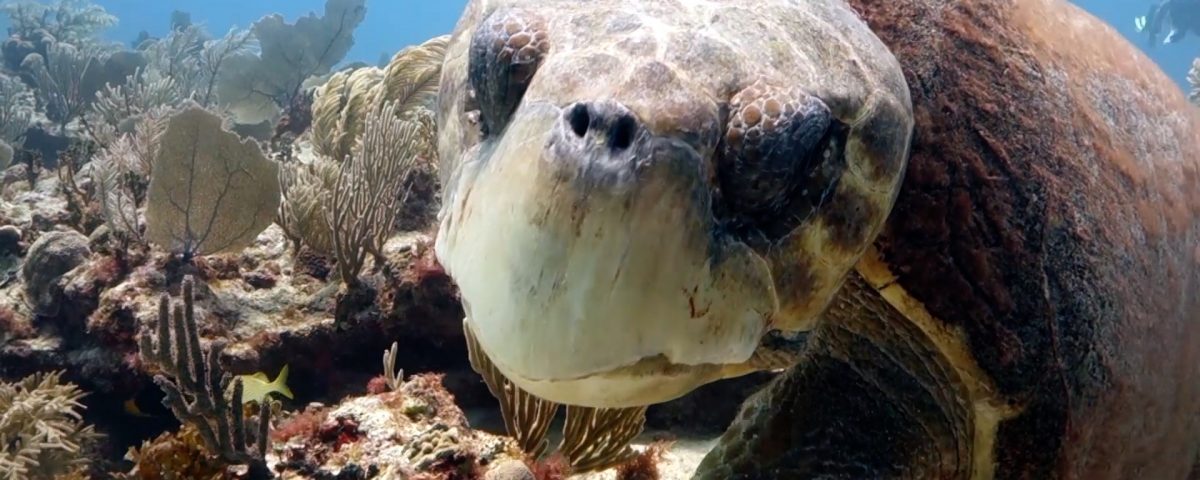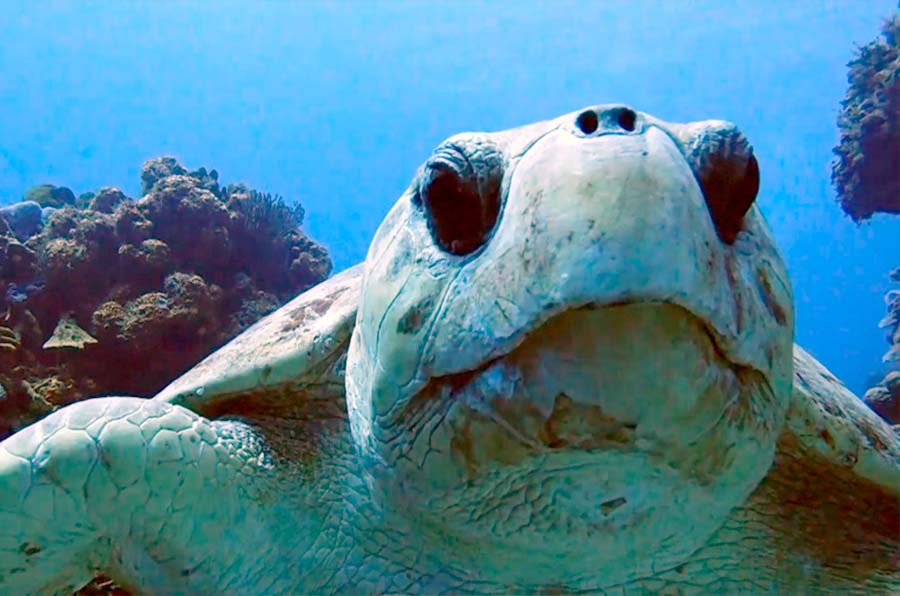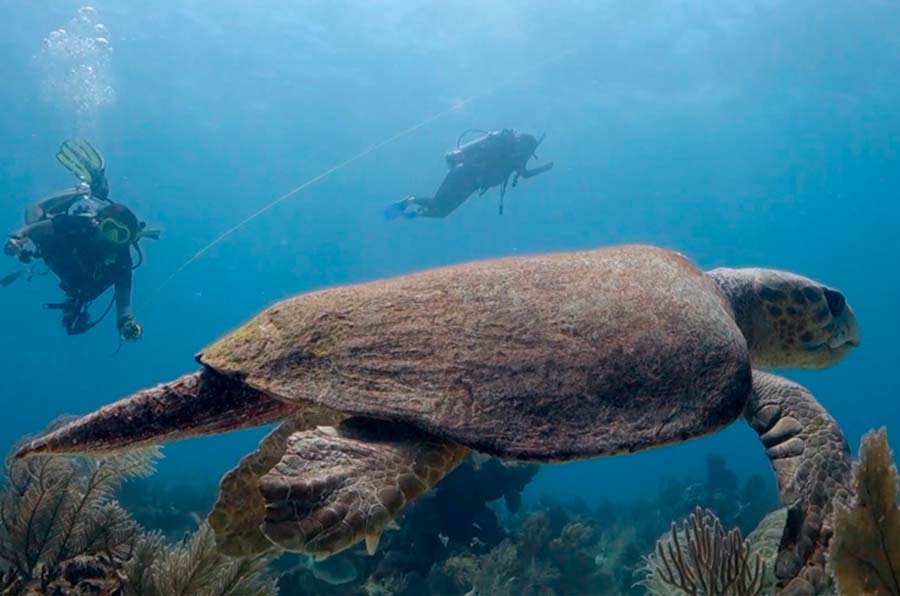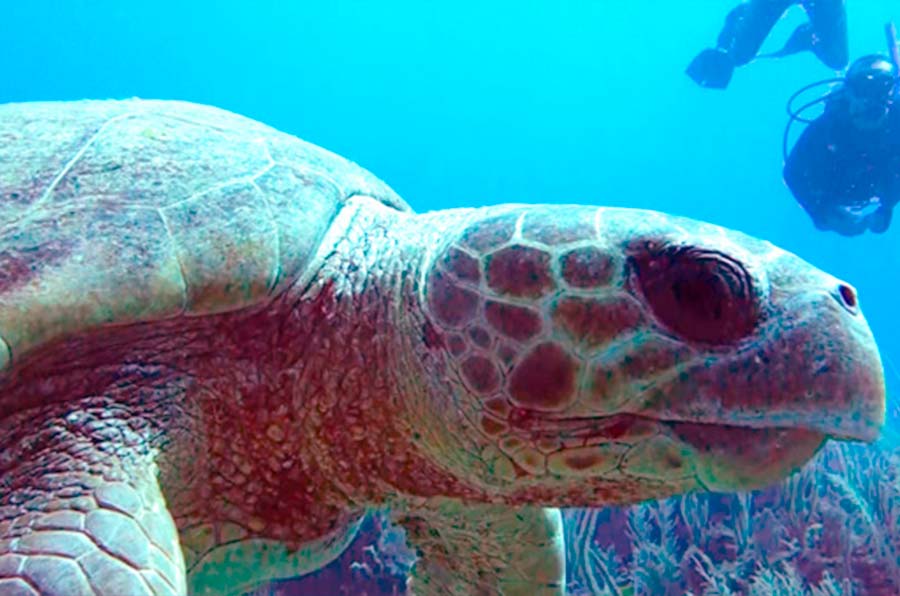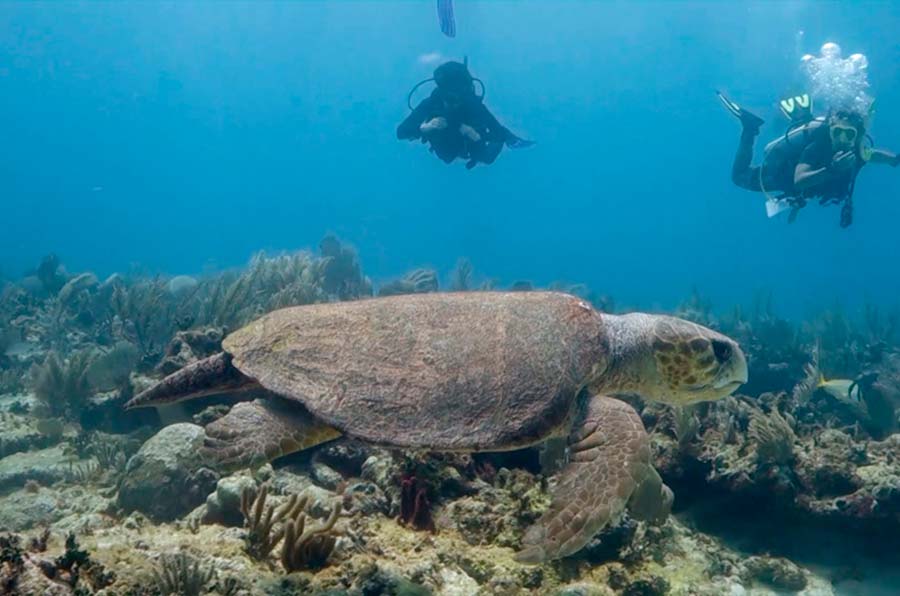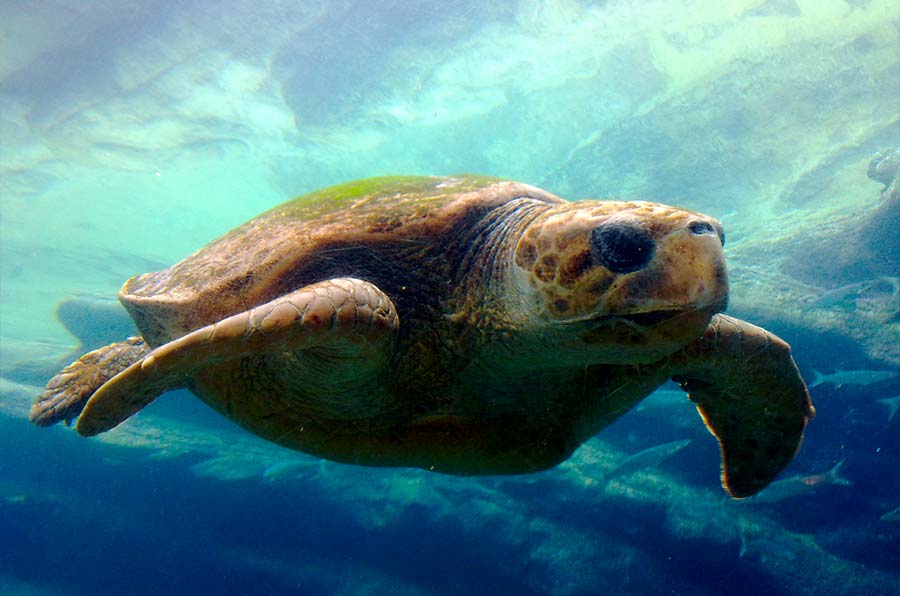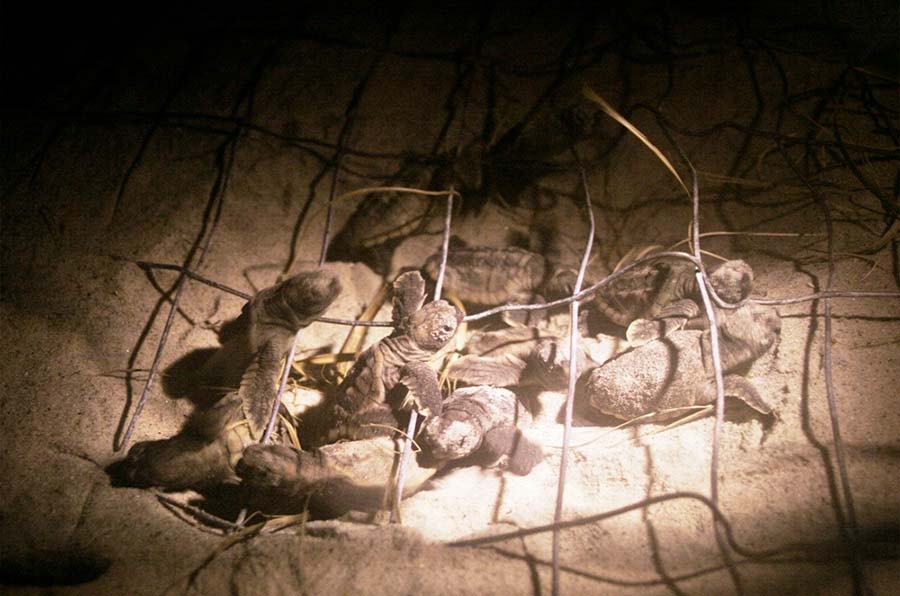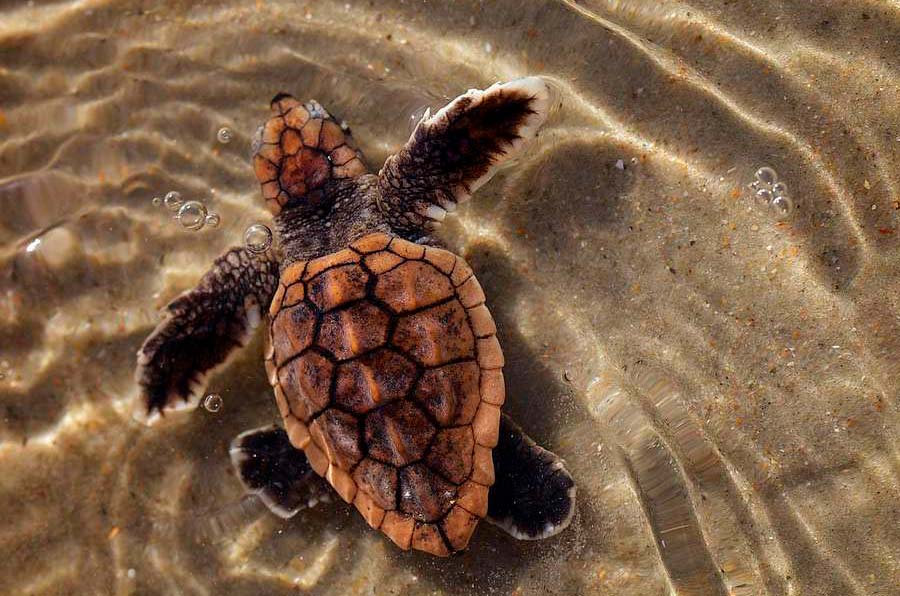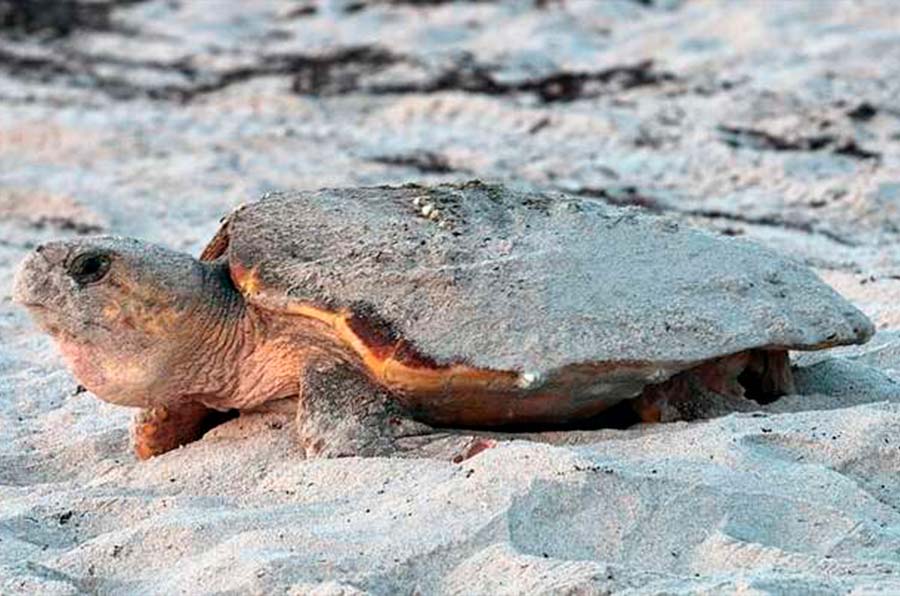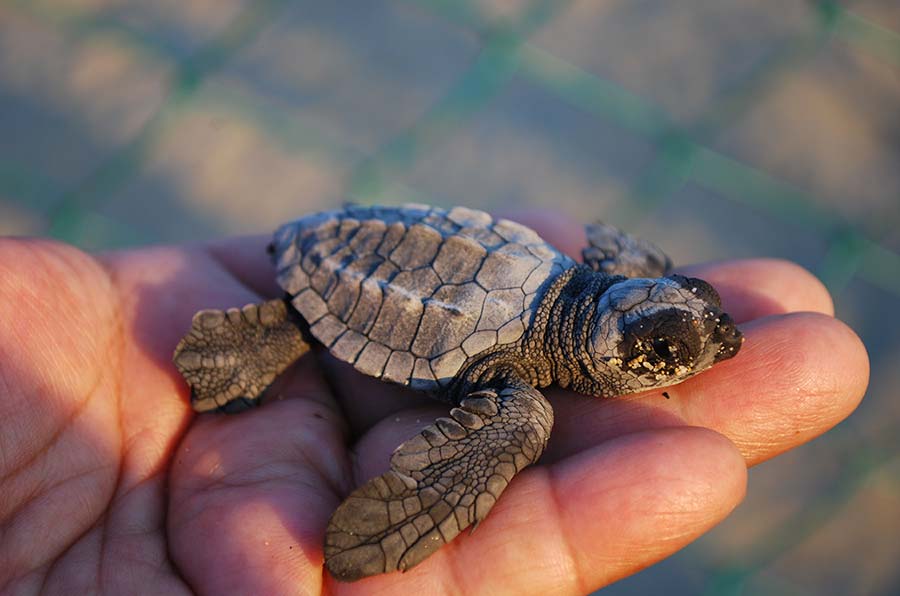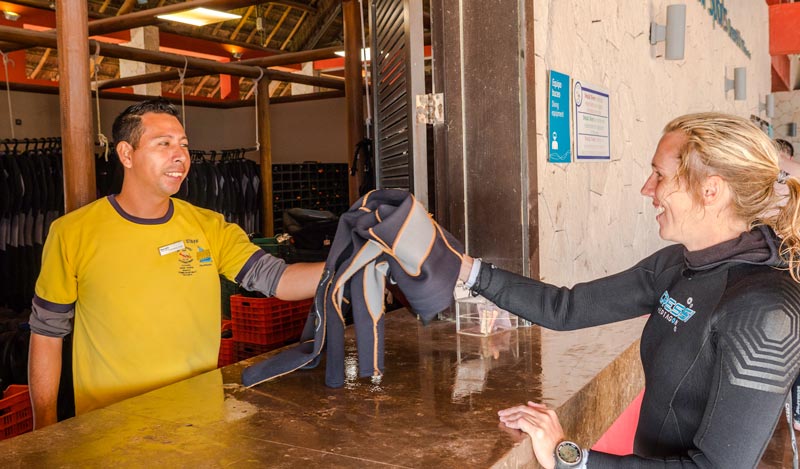5. Other Interesting Facts about Loggerhead Sea Turtles
Loggerhead sea turtle predators are sharks, large fish such as tuna, and other marine mammals.
Although in Spanish the meaning of loggerhead is “bobas” which means fool in English, their behavior denotes a highly developed evolutionary level. In other words, they are not dumb at all.
When the loggerhead sea turtle baby reaches the water, it is still too weak to survive. So, to protect themselves, they hide among the sargassum. These brown algae are, at the same time, protective, camouflage, and food for breeding turtles. One of the smartest loggerhead turtle facts! Isn’t it?
Well, even after so many precautions, only one in 1,000 turtles will live to become adults.
In that case, how long do loggerhead sea turtles live? These turtles have a lifespan of approximately 70 to 80 years, though some have been known to live up to 90 years or more.
Are these the only vicissitudes in their life? Are loggerhead sea turtles endangered?
Unfortunately, yes. They are classified as endangered by the International Union for Conservation of Nature (IUCN) and are listed as threatened under the U.S. Endangered Species Act (ESA). The main threats to loggerhead sea turtles include habitat destruction, poaching, bycatch, and pollution. Conservation efforts are being taken to help protect this species, including habitat restoration, nesting beach protection, monitoring, and bycatch reduction.
To the delight of Dressel Divers‘ guests, the Caribbean is part of the loggerhead turtle habitat. Now that you know some loggerhead turtle facts, for sure, you will look at them with other eyes the next time you meet one. Tell us, when are you coming to see them?




